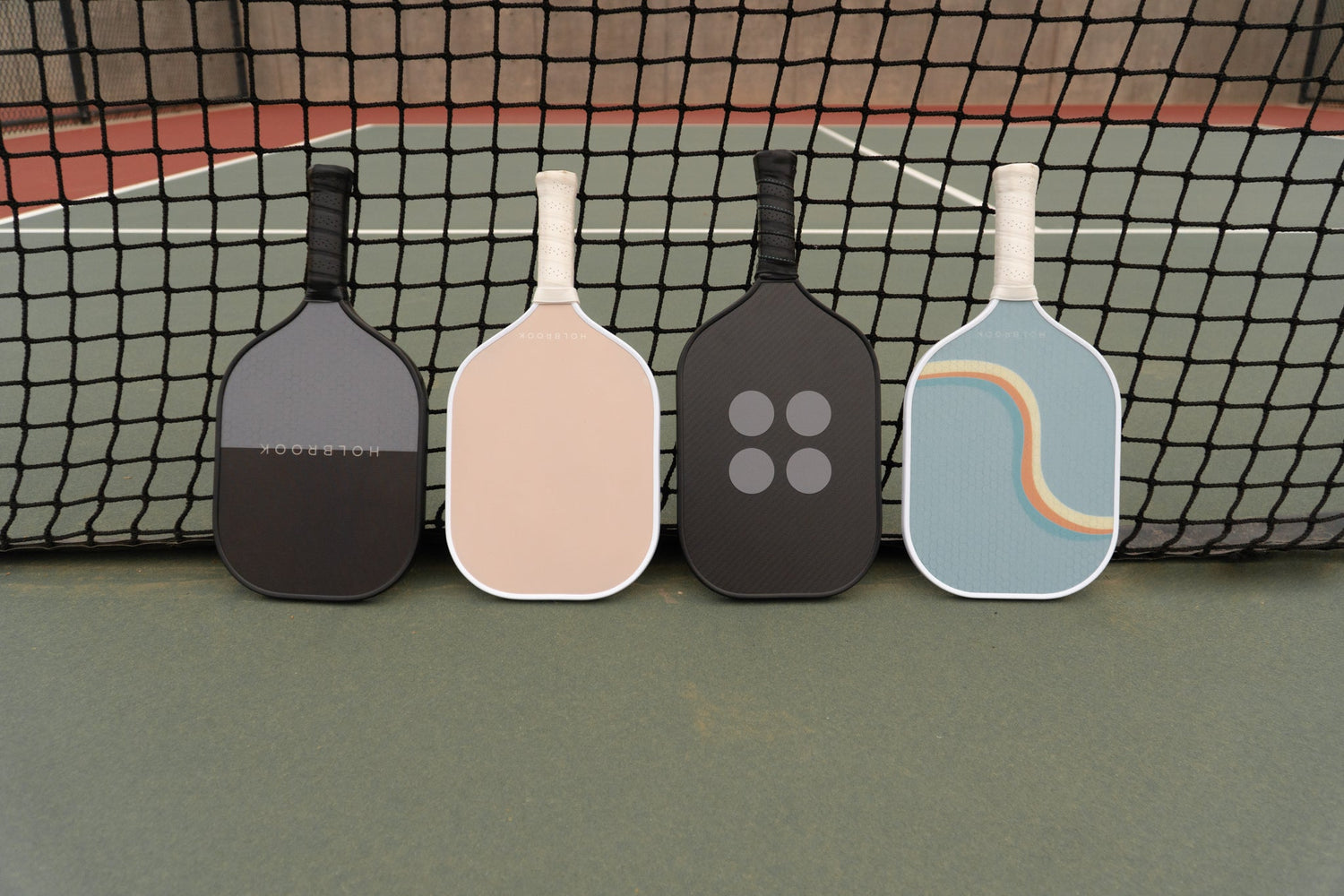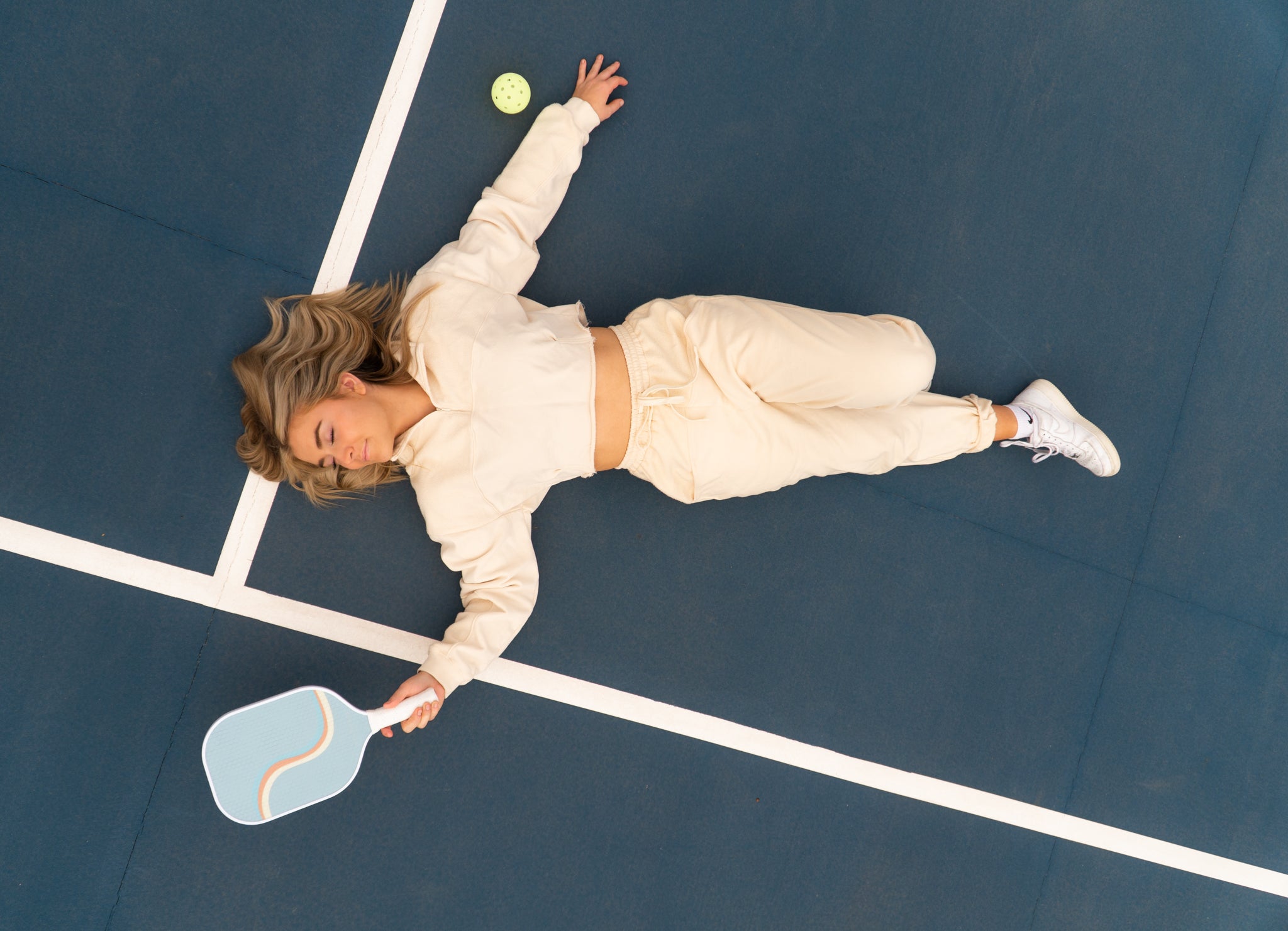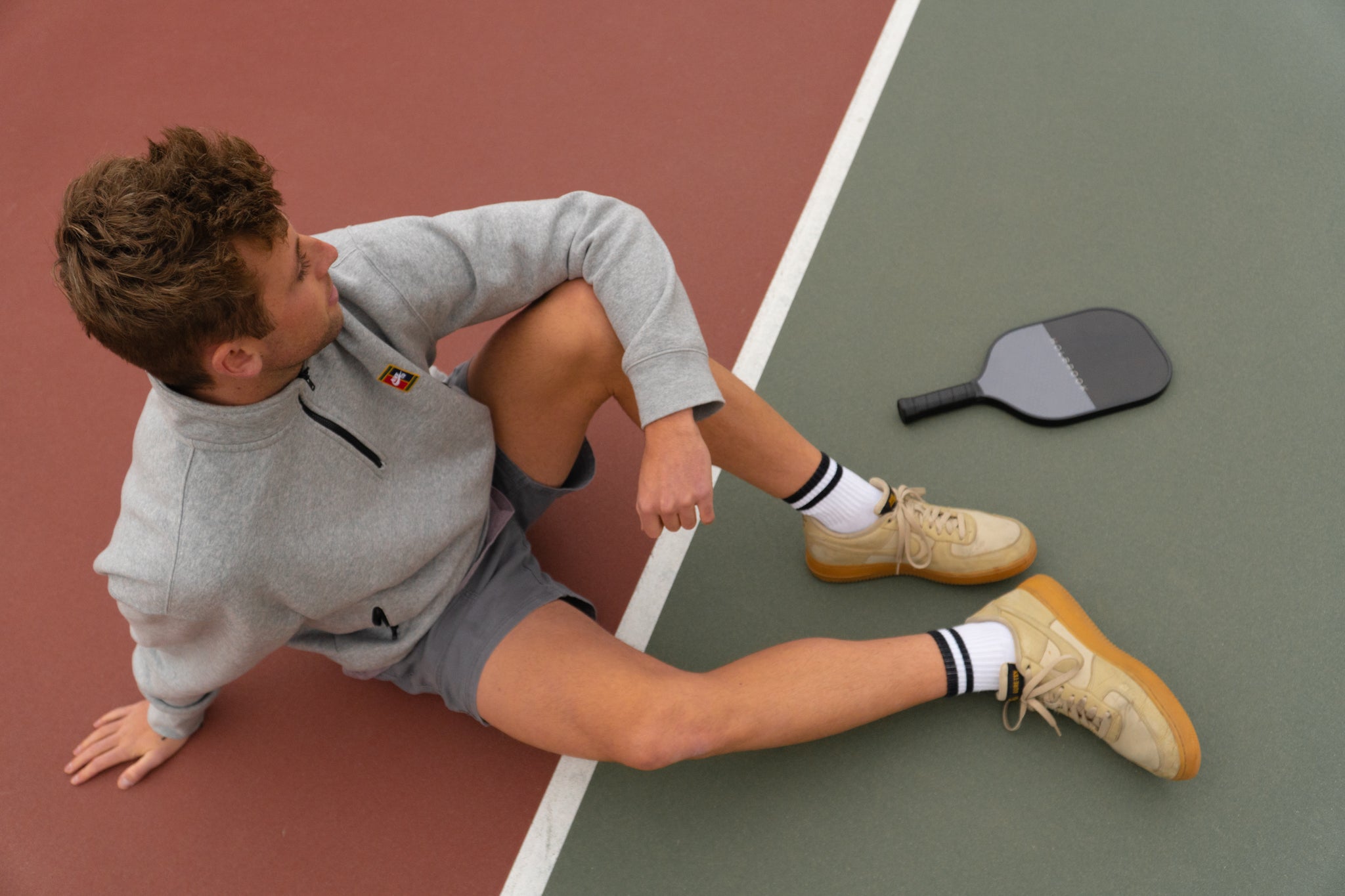Good pickleball players start with good pickleball paddles
The paddle – the number one most important piece of equipment for a pickleball player. Without it, we’d be bouncing a ball off a plain sheet of plywood. The iconic ping-pong style paddle is a big part of what sets this game apart from other sports like tennis, too, making it integral to the identity of our beloved sport.Though it might seem relatively straightforward to buy pickleball equipment, choosing a paddle can actually be super personal. I know, it sounds ridiculous – it’s not like we’re looking for a dog, a car, or a significant other, for crying out loud. But the truth is that the feel and attributes of a paddle vary wildly from one model to another, just as skill level, play styles, strengths, weaknesses, and physical attributes vary wildly from one pickleball player to another. A well-suited pick can help balance out your weak spots or amplify your strengths, and a poorly chosen one can hamper your ability to win games and even potentially place strain on your hand, wrist, and elbow.
The typically top-rated pickleball rackets sound like the obvious choice regardless of skill level, but that couldn’t be further from the truth. What might be right for Tyson McGuffin might not be right for you!
If you’re looking for the absolute best paddle for you, these seven characteristics can help you find the exact right combination of attributes to keep you playing at the top of your game.
Pickleball Paddle Weight
Weight is possibly the most crucial consideration in purchasing a paddle. The weight that fits your play style might differ significantly from one player to another – it’s very personal! For some players, the striking power of a heavier paddle is perfect for their aggressive play style. For others, the speed and control of a lighter paddle works better.More than that, weight can have a significant impact on the amount of muscle needed and the strain that’s put on your arm and elbow as you play. If you already suffer from joint difficulties, a heavier paddle may put you in pain or cause long-term damage to your wrist, arm, and elbow. Both younger and older players may opt for a lighter paddle regardless of its lack of power, as it may be easier to use.
Paddles typically come in three different sizes:
Handling the paddle in person will likely give you the best idea of how it works for you. However, when ordering online, feel free to refer to a pickleball paddle weight guide to find the best weight for pickleball paddles based on your needs and abilities.
Pickleball Paddle Price
Pickleball equipment comes in a wide range of price points. You can find paddles under $250. Though the gap between these might seem cavernous, pro players will be able to recognize the difference in construction, feel, and most importantly, play.
Lower price paddles will certainly get the job done, and you can play – and even win! -- plenty of games with a paddle that costs under $50, making a lower price paddle a safe investment for a beginner. However, for those who know that pickleball is their new passion and are aware of their play style, investing in a higher-quality paddle may provide a better bang for your buck.
Pickleball paddle grip size
Like racquets and paddles for other sports, pickleball paddles come in several different grip sizes to accommodate for players of all different sizes.
Choosing the right grip is more important than you’d think. Go too big and your range of motion is reduced. Go too small, and you risk squeezing too hard and potentially developing hand and lower arm issues like tendonitis. In the latter instance, fortunately, players can temporarily adjust the size of their grip with overgrips.
How do you find your grip size? Easy: measure from the top of your ring finger of your dominant hand to the bottom lateral crease of your palm. From there, you can consult a pickleball paddle grip size chart to figure out what to buy for yourself.
Pickleball paddle material
Pickleball paddles consist of a surface and a core. Both impact play in different ways. The core, or the inner material of your paddle, has a greater impact on your paddle’s performance than the surface.
Many paddles are made from Nomex, a hard and dense material that generates a lot of power for shots but offers less control over the ball’s speed and aim. Aluminum paddles are light and have better control over a Nomex paddle, but frankly, they are not powerful enough to be used by serious players unless they’re accommodating for a sprain or injury that makes using a heavier paddle painful.
The vast majority of paddles, however, are made with a polymer core, and for good reason – it’s a versatile material that combines the best of Nomex and aluminum into one paddle, offering speed, control, and power.
The surface, also called the facing, is less influential, but it can still make a difference. Fiberglass facings tend to be heavy and powerful, while graphite facings offer more control and finesse at the expense of power.
Pickleball paddle shapes
Classically shaped pickleball paddles are good pickleball paddles for beginners, as it may be a while before they have the control over the paddle necessary to relegate all of your hits to the very center of your paddle. Wider paddle shapes may also be good for those who have yet to master hitting the paddle’s sweet spot, although the width may have an impact on speed. Longer, narrower paddles are great for more advanced players who are interested in a paddle with a lot of reach and power that requires a certain level of skill to use well.
Pickleball paddle thickness
The thickness of your paddle can also have a significant impact on your play style. Thicker paddles tend to offer more control and maintain their stability with off-center shots, making them popular with beginners. Thinner paddles tend to offer more power, though they are less stable and offer less control.
Thick core pickleball paddles tend to hover somewhere around 16mm wide, while thinner ones tend to be somewhere around 10mm. This range offers some flexibility for players to find the exact width that works for them.
Don’t stress about finding the absolute best pickleball paddle – find one that works for you right now
Don’t fret too much about finding the best paddle at every price point, especially as a new player. The wide range of specs for paddles makes it possible for you to find a paddle that works for you at around $60 and paddles that seem absolutely useless at $100+. As you discover your playing style, you’ll be able to figure out with paddles support your style and which ones might challenge you to learn a bit more about alternative playing styles.









